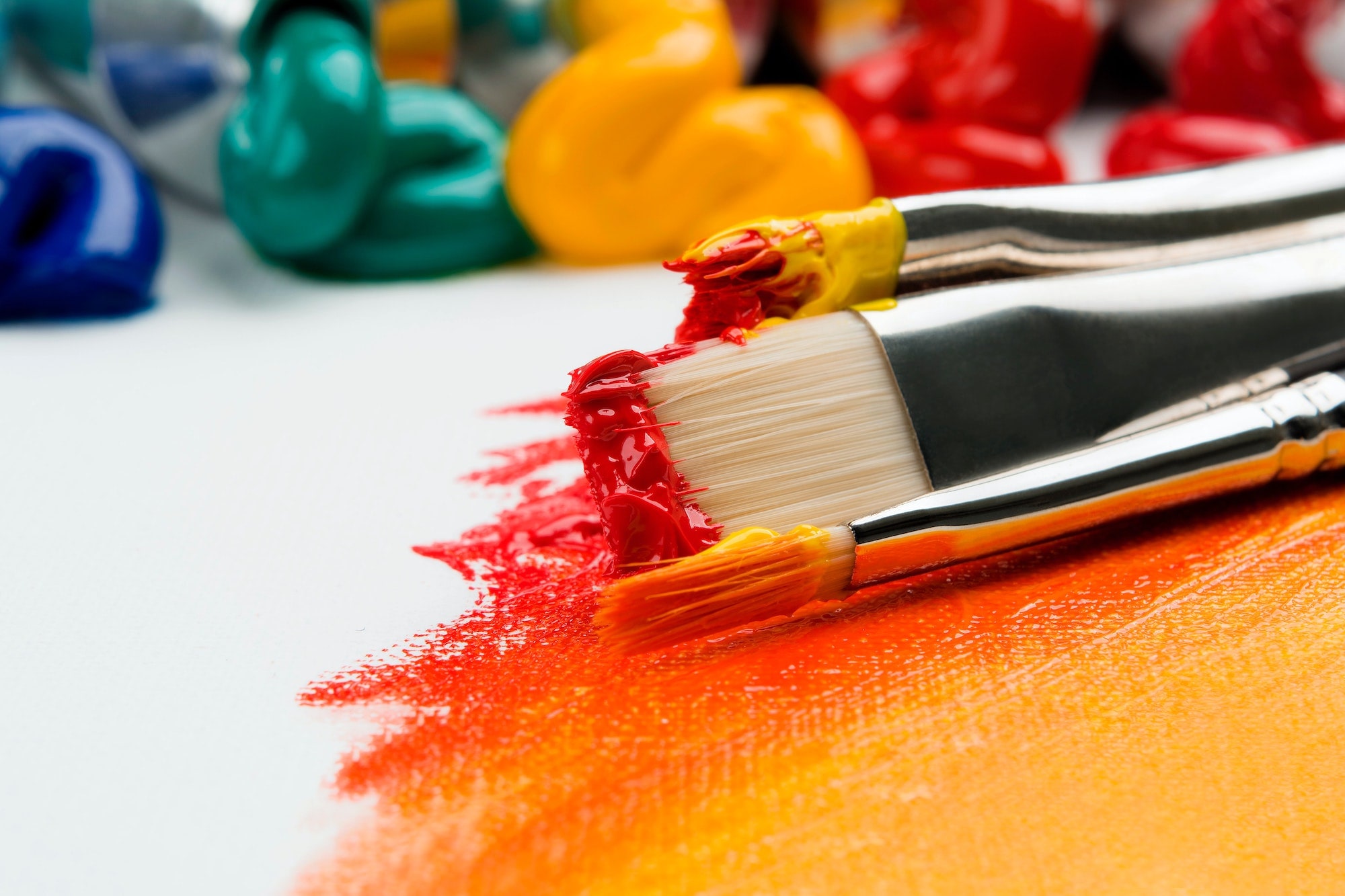Acrylic paint is often considered one of the most versatile paint options. As much as watercolor painting has its advantages, water-based paint often dries irregularly and forms “beads” of paint that doesn’t sometimes work for artists, depending on the style.
For those looking for something that is considered easy to learn, dries fairly quickly, and requires relatively minimal supplies, acrylic paint is a fantastic way to go for both beginners and experts. Here we have a collection of the best acrylic paint options, from how to get started to what to buy for working on different surfaces.
How to Use Acrylic Paint
Acrylics are a water-based paint that are made of pigment particles that are dispersed in an acrylic polymer emulsion. Acrylic paint can bond to lot of different surfaces, while different mediums can be used to modify their binding characteristics. This makes them useful in a lot of different ways when painting on all kinds of surfaces.
Here are some common practices when just getting started painting with acrylics.
- Prep the Location. Set up an easel and prepare materials around you that you think you will need: a rag or paper towels, a water cup, and a few different brushes to experiment with.
- Practice and Experiment. When using acrylics, experimenting with how the paint looks and feels and how the paint applies to the surface you’re using is important to note. How quickly does it dry? How does it set on the canvas you are using? How does it blend with the different colors? Acrylics can be thinned with water or some kind of acrylic medium and used as washes, similarly to using watercolor paints. While using gloss or matte finishes or even a satin sheen are common in other cases.
- Create a Rough Sketch. This could even be in your head. But plan out what your painting will be and visualize it in some way. If you’re painting a plant, visualize roughly how many leaves there will be, how big the pot will be that the plant is in, and how much space you will be taking up with the different parts of the plant. Those sorts of things. And of course, if its helpful, sketch it out, either on a piece of paper or digitally.
- Paint. In most art you learn the most by doing. The first couple paintings you will learn more than anything you will read or watch online. Some general rules of thumb with painting with acrylics include:
- Create large shapes first before moving on to small details. It will be easier to paint on top of the large shapes after they dry.
- Start with lighter tones before moving on to dark colors. Generally darker tones can create the depth that is added to lighter tones. The dark colors often add richness to the light and midtone colors that are already on the canvas, so painting them after the lighter colors will help.
- Acrylic paint dries quickly. Always keep that in mind. Blend colors on your palette before painting on the canvas.
Best Acrylic Paint for Beginners
Craft Acrylic Paint, 60ml Bottles – Set of 20
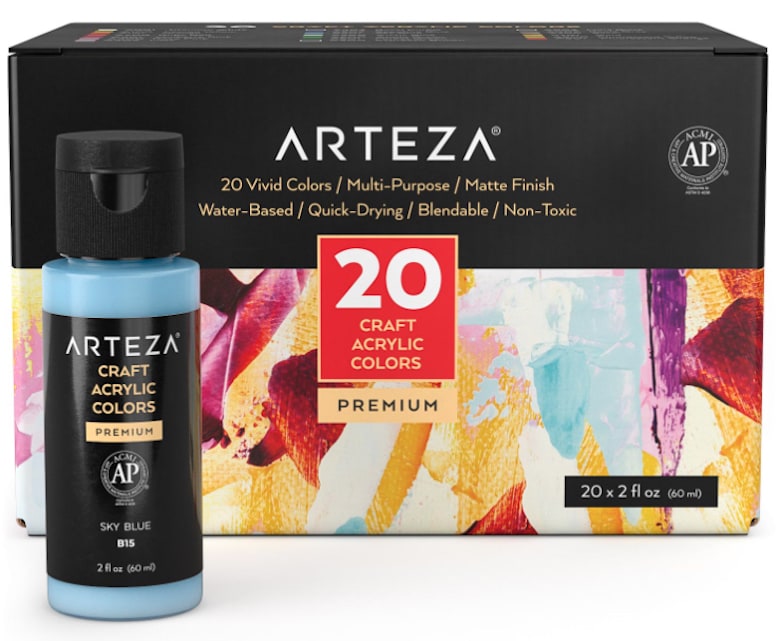
Description: Very versatile, with great reviews. “Craft Acrylic Paint Set includes 20 unique colors that dry with a matte finish. Craft, design, and DIY in a variety of ways with these versatile, high-quality craft acrylics. Your set includes 20 unique colors that dry with a matte finish. The paints have a soft body, blend easily, and provide excellent surface coverage. You can use them on metal, plastic, paper, canvas, terra cotta, fabric, wood, and glass surfaces.”
Best Acrylic Paint for Canvas
Golden Heavy Body Artist Acrylic Paints and Sets
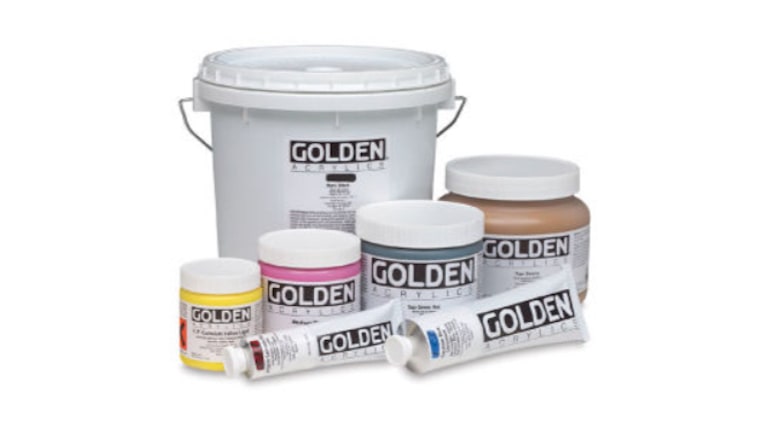
When working on canvas generally thicker acrylic paints, i.e. heavy body paints, are usually considered the best. When using thinner acrylic paint, i.e. fluid acrylic, the canvas requires more paint to create a fully opaque layer, which can then drip if you’re on an easel or otherwise working upright.
Description: “Daler-Rowney System 3 Heavy Body Acrylic Paints, powered by Cryla, offer more pigment and more covering power than ever before. They’re ideal for achieving textured effects and using impasto techniques because they retain brush marks and hold their shape to create the effect of motion and add volume to your artwork. They’re fully intermixable with System 3 Medium Body Acrylic Paints.”
Best Acrylic Paint for Glass
Pebeo Vitrea 160 Glass Paints and Sets
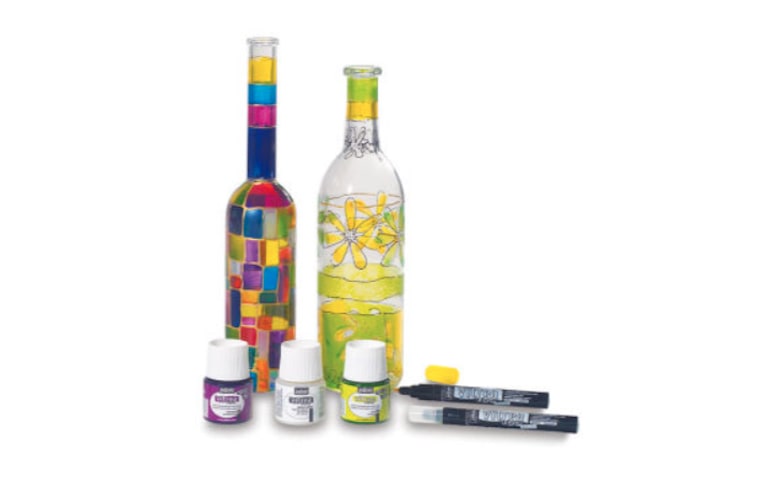
Although they work on a wide variety of surfaces acrylic paints works best on surfaces that they can stick to such as canvas or wood. Because of this, although you can technically use any acrylic paint on glass, it may peel off because the non-absorbent surface of the glass is not ideal for the acrylic paint. Because of this, certain acrylic paint as well as using certain priming materials will help get the effect you want when painting acrylic on glass.
Description: “Developed to mimic the look of genuine stained or colored glass, Pebeo Vitrea 160 Glass Paint is part of a new generation of thermo-hardening, waterbased, non-toxic paints specially designed for use on glass. Fully intermixable and transparent, Vitrea 160 Glass Paints come in an array of stunning colors and glossy, shimmer, and frosted finishes. Customize dinner or glassware, create colorful holiday ornaments, or paint intricate designs on vases, windows, mugs, and more—with Vitrea 160 colors, the possibilities are endless!”
Best Acrylic Paint for Wood
Plaid FolkArt Matte Acrylic Paints and Sets
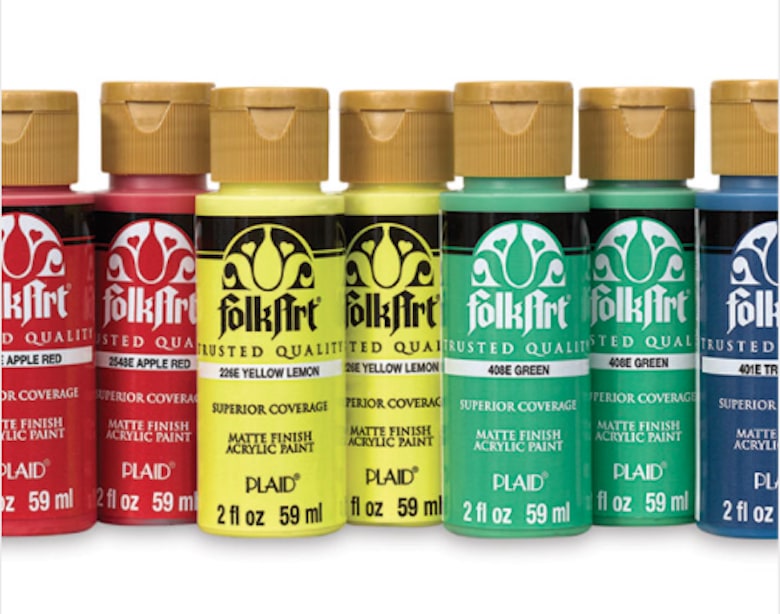
Generally acrylic paint works very well on wood. But for longevity of the paint and the color, preparing it beforehand (with a primer) and sealing it after will help create the best effect long-term. As for the paint itself, this is considered a solid choice by many reviewers.
Description: “FolkArt Matte Acrylic Paints offers painters of all levels rich color and superior coverage for a wide variety of painting applications. Ideal for blending, shading, and highlighting, colors feature a thick, creamy texture for smooth brushwork, stenciling, and design techniques on a wide variety of porous surfaces, including canvas, wood, terra cotta, fabric, paper mache, and more.”
Photo by Anna Kolosyuk on Unsplash
Last Updated on March 10, 2022.

